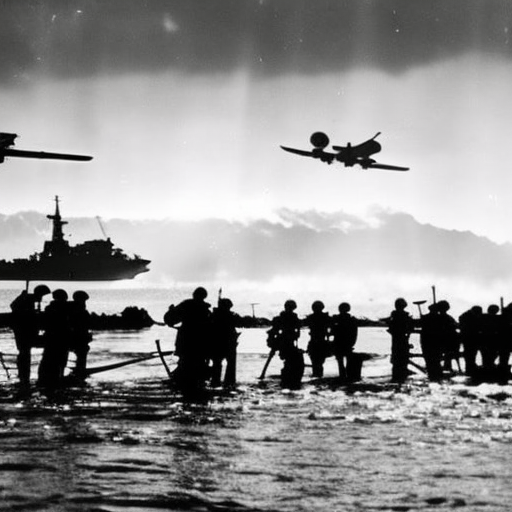The Pacific War: A Summary
The Pacific War, also known as the Asia-Pacific War, was a major conflict that took place in the Pacific region during World War II. It began with the Japanese attack on Pearl Harbor on December 7, 1941, and ended with Japan’s surrender on September 2, 1945. The war involved numerous countries, including the United States, Japan, China, Australia, and many others.
Causes of the Pacific War
The Pacific War was primarily driven by Japan’s imperialistic ambitions and its desire to expand its territory in Asia. Japan sought to establish a Greater East Asia Co-Prosperity Sphere, which aimed to create a self-sufficient bloc of Asian nations under Japanese control. This expansionist policy brought Japan into conflict with other powers, particularly the United States, which had economic and strategic interests in the region.
Key Events
The attack on Pearl Harbor was a pivotal event that brought the United States into the war. Japan’s surprise attack on the American naval base in Hawaii resulted in significant damage to the US Pacific Fleet and led to the US declaration of war against Japan. In the following months, Japan rapidly expanded its control over Southeast Asia, capturing territories such as the Philippines, Singapore, and Burma.
The Battle of Midway, fought in June 1942, marked a turning point in the Pacific War. The US Navy successfully repelled a Japanese offensive, sinking four Japanese aircraft carriers and inflicting heavy losses on the Japanese fleet. This victory halted Japan’s advance and put the United States on the offensive.
The island-hopping campaign was a key strategy employed by the Allies in the Pacific War. Rather than engaging in direct assaults on heavily fortified Japanese-held islands, the Allies focused on capturing strategically important islands and bypassing others. This approach allowed the Allies to gradually move closer to Japan while bypassing well-defended positions.
The Battle of Guadalcanal, fought from August 1942 to February 1943, was a significant engagement in the Pacific War. It was the first major offensive launched by the Allies against Japanese-held territory and resulted in a hard-fought victory for the United States. The battle demonstrated the determination and resilience of both sides and marked a turning point in the war.
Impact of the Pacific War
The Pacific War had a profound impact on the countries involved and the region as a whole. The war resulted in immense human suffering, with millions of lives lost and widespread destruction. The use of atomic bombs by the United States on the Japanese cities of Hiroshima and Nagasaki in August 1945 further intensified the devastation.
The Pacific War also had far-reaching political consequences. Japan’s defeat led to the dismantling of its empire and the occupation of the country by Allied forces. The war also marked the rise of the United States as a global superpower and the beginning of the Cold War between the United States and the Soviet Union.
Conclusion
The Pacific War was a significant chapter in World War II, characterized by intense fighting, strategic maneuvering, and devastating consequences. It was a conflict driven by Japan’s imperialistic ambitions and the desire of other powers to resist Japanese expansion. The war’s impact on the countries involved and the region as a whole was profound and far-reaching. The Pacific War serves as a reminder of the destructive power of war and the importance of international cooperation in maintaining peace and stability.












